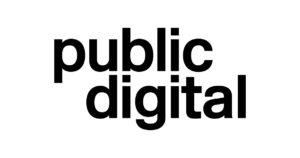James Stewart, Partner, Public Digital
State of Open: The UK in 2022
Phase One: “The Open Source Journey”


The Government Digital Service (GDS), established in 2011, prioritised the use of open source software (OSS) to meet citizen’s digital service expectations. GDS aimed to empower diverse, skilled teams with a clear mission and the freedom to creatively address user needs. Embracing OSS allowed teams to identify and use the most suitable tools, fostering a culture of decision-making and collaboration. The shift from outsourced development led to groundbreaking services like GOV.UK and a transformation in government culture. However, recent challenges include signs of reverting to old outsourcing models and a decrease in commitment to open communication. To sustain the benefits of OSS, renewed government commitment to openness, community building, and multi-disciplinary collaboration is essential.
GDS and our public sector – Thought Leadership
James Stewart, Partner, Public Digital
When we set up the Government Digital Service back in 2011 we knew that we were only going to be able to meet the expectations citizens had of digital services if our team was free to build them the way the very best digital services are built.
The best services come when diverse, skilled teams are given a clear mission (outcomes to meet) and the freedom to bring their collective creativity to bear on meeting the needs of users. From a technology point of view that means equipping and incentivising technologists to focus on the distinctive problems that need solving here–and to do so as part of the multi-disciplinary team–rather than reinventing the wheel or fighting against top down technology constraints.
In 2011, as today, that meant understanding all the opportunities available in the Open Source Software world. Not as a top-down effort (they don’t scale to handle the Open Source Software ecosystem) but by trusting our teams to identify, test, evaluate and select the right tools. The challenge for the teams was always to pick tools that would let us focus as much as possible on meeting users’ needs and as little as possible on anything else, but to do so sustainably.
That was vital to deliver our initial services (things like GOV.UK, ePetitions, Register to Vote, and so on) at the pace, scale and quality that we did, but also to effect some of the deeper changes that were necessary.
Prior to 2011 almost all development of online services for government was wholesale outsourced, usually with complex functional specifications and architectures designed before anyone had gotten anywhere near a real user. It was rare to see a working relationship that allowed for an evolving understanding of what was needed, much less genuine openness about how any given system worked.
Structures that assumed governance meetings and contractual documents as the only mode of communication made it hard for government to see whether it was getting value for money, much less whether there were ways to reuse work or make their software supply chain more resilient. And they made it hard for vendors to have open conversations about better ways of achieving the intended outcomes.
By creating a different environment for our new teams we were able to seed a different culture of decision making and demonstrate a different mode of collaboration. By joining that up with colleagues working on procurement reform we were able to create new opportunities for different types of partnerships across government and its supply chain. And by doing all of that openly, the UK government became seen as a first mover in a wave of open-by-default digital service teams around the world.
Many others have sought to follow suit, and Open Source Software has captured the imagination of the Digital Public Goods and Digital Public Infrastructure movements in the international development community. That’s incredibly exciting, but one of our lessons is that to be successful in embracing Open Source Software you need to work on many fronts. That’s why last year my company, Public Digital, published “Open Source Software in government: creating the conditions for success23” covering four areas that all need focus: the policy environment, in-house skills and capabilities, Open Source Software vendor ecosystem, and sustainability.
More than a decade on, it’s assumed that teams will use Open Source Software in UK government and there’s plenty of precedent for them also releasing their work under Open Source Software licences. But there’s more work to be done: there are worrying signs of slips back toward the old outsourcing models, of new functional silos springing up, and less commitment to building communities of practice and open communication than
there was a few years ago.
To realise the real opportunities and to make Open Source Software work sustainable, government needs to commit anew to working in the open, to do more to provide ways for teams to spot opportunities and do things like invest in supporting Open Source Software projects they have used or they have created, and to continue to lead the way in multi-disciplinary working.
The opportunity Open Source Software presented us with in 2011 was enormous. It still is. Embracing internet-era ways of working–seen in their most pure form in the Open Source Software world–let us take £4.1bn out of government IT spend over three years, stimulate a new ecosystem of businesses and build new, award winning services.
That was just the tip of the iceberg of what’s possible in the UK and globally.
“The UK Government did a lot of good early stuff on open source in government, and they were kind of pioneering in that. There’s a lot of value in those kinds of software, but there’s still a lot more to do in those areas. In terms of regulation, often it is the global things that matter, not the legal things. Standardisation and not being different is actually kind of useful from that point of view.“
Justin Cormack, CTO, Docker
